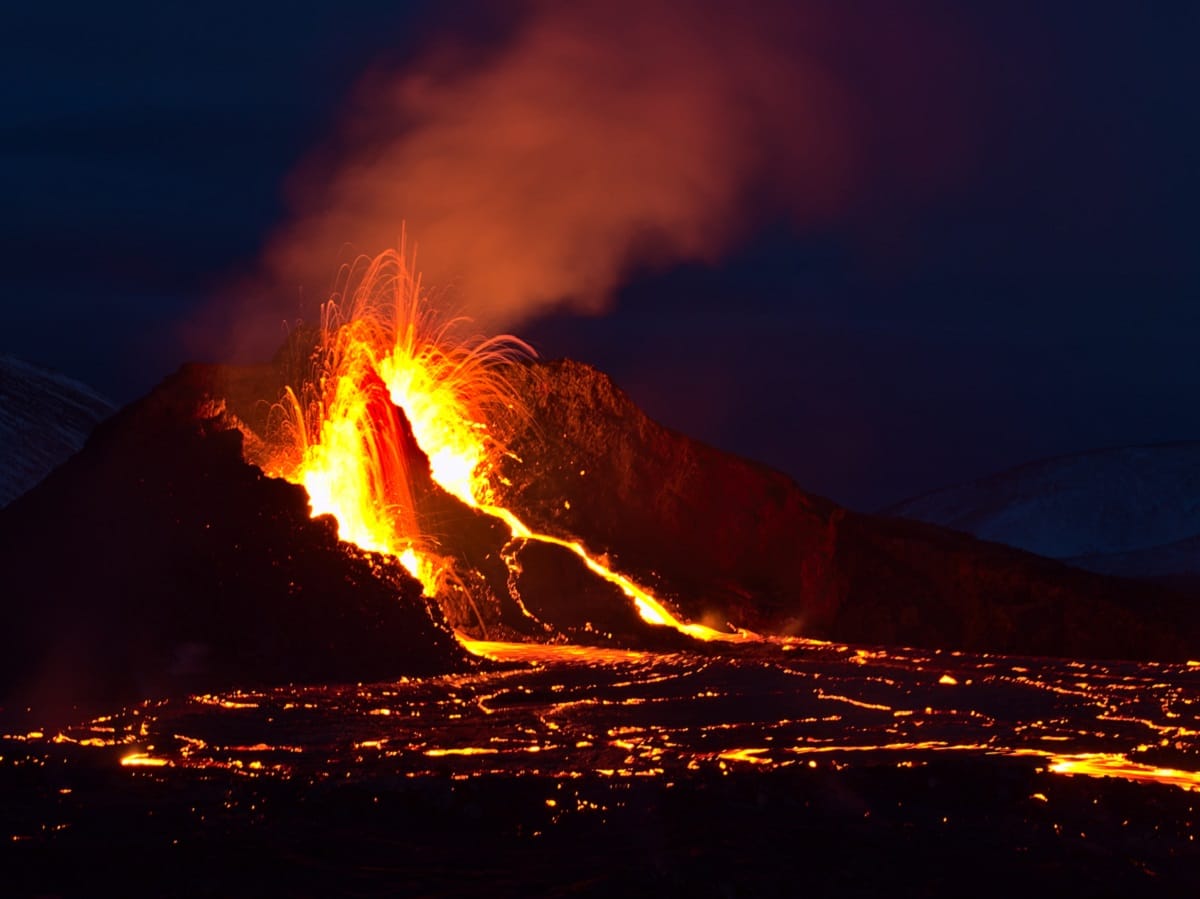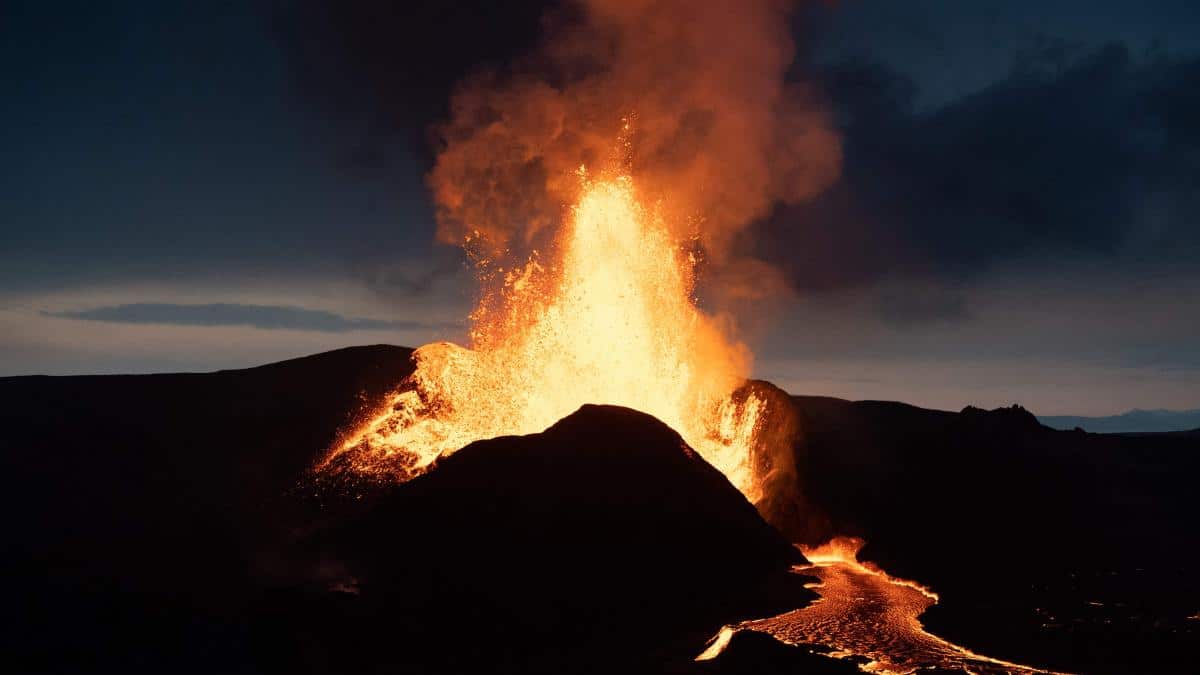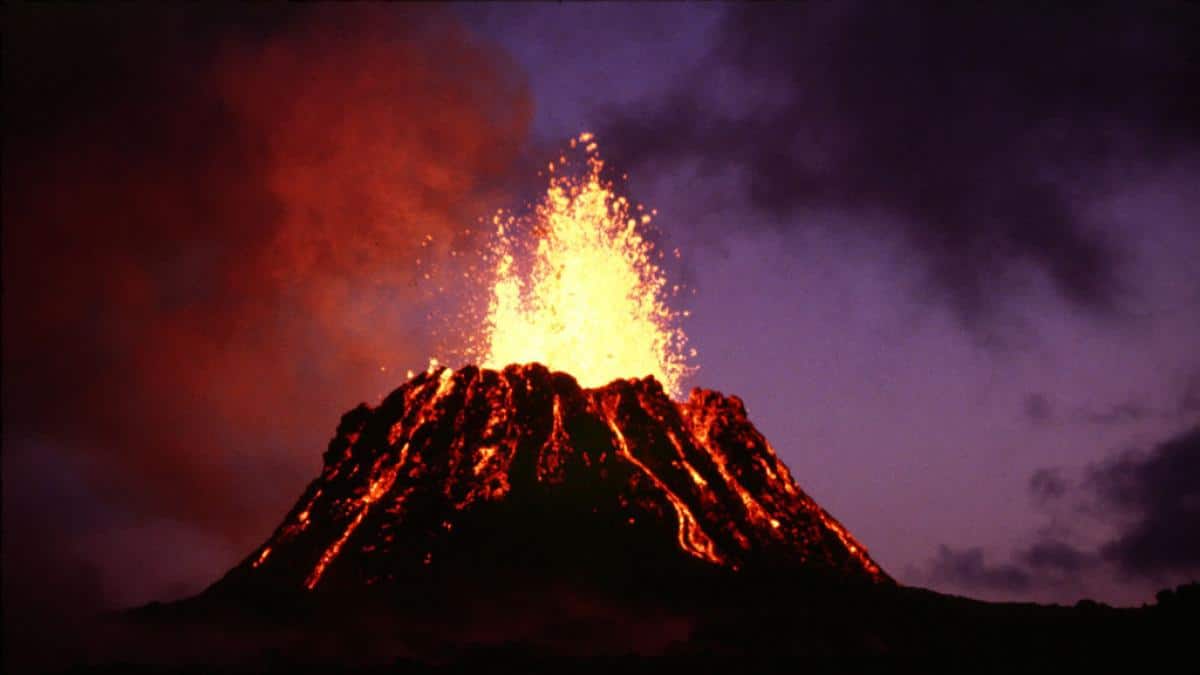
Volcanoes and eruptions have been something that human beings have feared all their lives. It is usually very destructive and, depending on the type of eruption it has, it can destroy an entire city. There are many people who wonder why does a volcano erupt.
For this reason, we are going to dedicate this article to telling you why a volcano erupts, what its characteristics are and the danger of these eruptions.
composition of volcanoes

Although seemingly peaceful on the surface, the interior of the volcano is a veritable hell. Its fissures are so full of hot magma that it burns everything in its path and contains potentially toxic gases dissolved in it.
We refer to the lava found in the depths of a volcano as magma.. It's called lava when it comes out. In the next section, we will explain in detail what lava is made of and what types of lava exist.
In addition, lava is composed of silicate-type minerals that erupt from volcanoes at temperatures between 900 and 1000 ºC. Depending on its silica (SiO2) content, we can find two types of lava:
- Fluid Lava: It has a low silica content. This type of lava is less viscous and flows quickly.
- Acid lava: They are rich in silica. They have high viscosity and flow slowly.
In addition to silica, lava also contains dissolved gases. It is primarily water vapor and, to a lesser extent, carbon dioxide (CO2), sulfur dioxide (SO2), hydrogen sulfide (H2S), carbon monoxide (CO), hydrochloric acid (HCl), helium (He), and hydrogen (H).
Still, you should be aware that the chemical composition of lava can vary depending on the type of magma and volcanic activity, and again, different types of lava can cause very different eruptions, as we explain below.
Why does a volcano erupt?

Invisible to the human eye, magma accumulates inside the volcano. Like a devastating fire, it melted the surrounding rocks. When enough magma builds up, it begins to look for an escape route and begins to move toward the surface.
When magma rises to the highest regions of a volcano, destroys the rock and creates an overpressure that deforms the ground. Dissolved gases in magma are released due to cracks in the rock. These include: water vapor (H2O), carbon dioxide (CO2), sulfur dioxide (SO2), and hydrochloric acid (HCl).
Types of volcanic eruptions
The type of eruption depends on the shape and size of the volcano, as well as the relative proportions of gases, liquids (lava) and solids released. These are the types of rashes present and their characteristics:
Hawaiian eruptions
They are characteristic of fluid magmas of basic composition (mainly basaltic) and are typical of some oceanic islands such as the Hawaiian Islands, from which they get their name.
They are eruptions of very fluid lava and little gas, so they don't burst very easily. Volcano mansions are usually gently sloping and shield-shaped. The magma rises rapidly and the flow occurs intermittently.
The danger posed by these types of eruptions is that they can travel distances of several kilometers and cause fires and damage the infrastructure they encounter.
Strombolian eruptions
The magma is usually basaltic and fluid, rising generally slowly and mixed with large gas bubbles up to 10 meters high. They are capable of producing periodic explosions.
They do not generally produce convective plumes, and pyroclastic debris, which describes the ballistic trajectory, is distributed in the environment for several kilometers around the pipe. They are usually not very violent, so their danger is low, and they are capable of producing lava cones. These eruptions occur at the volcanoes of the Aeolian Islands (Italy) and Vestmannaeyjar (Iceland).
Vulcan eruptions
These are moderately explosive eruptions caused by the unblocking of volcanic conduits blocked by lava. Explosions occur every few minutes or hours. They are common in volcanoes that spew magma of moderate composition.
The height of the columns should not exceed 10 kilometers. They are usually low-risk rashes.
Plinian eruptions
They are gas-rich eruptions that, when dissolved in the magma, cause its disintegration into pyroclasts (pumice stone and ash). This mix of products leaves the mouth with a high rate of rise.
These rashes erupt steadily, both in number and speed. They include highly viscous siliceous magmas. For example, the eruption of Mount Vesuvius in AD 79.
They are high risk because the eruption column multiplies and reaches great heights (even in the stratosphere) and causes a significant ash fallout that affects a very large active radius (thousands of square kilometers).
Surtseyan eruptions
They are explosive eruptions of magma that interact with large amounts of seawater. These eruptions created new islands, such as the eruption of Mount Sulzi in southern Iceland, which formed a new island in 1963.
These eruptive activities are characterized by direct explosions, which produce massive clouds of white vapor and black clouds of basaltic pyroclasts.
Hydrovolcanic eruptions
In addition to the volcanic and plinian eruptions already mentioned (in which the intervention of water seems to be confirmed), there are other completely submerged properties (that is, they have little contribution of igneous material) that are caused by the rise of magma.
They are steam explosions created in the rock above the magma heat source, with devastating effects due to deflagration and mud flow.
How long can a volcanic eruption last?
As we have seen these days, it is difficult to predict how volcanoes will behave. Still, to make their predictions as accurate as possible, volcanologists monitor carbon dioxide and sulfur dioxide emissions.
Earthquakes can also indicate that magma is rising through the Earth's crust.. By studying these signals, scientists can tell that volcanic activity is in progress.
As for the duration of the eruption, it depends on the amount of magma it contains, which is difficult to know because pockets of magma material may be feeding back material that rises from the lower layers of the planet. The only resources left for experts to predict the duration of eruptions are to study the geological record and previous eruptions.
What happens when lava from a volcano reaches the sea?

Different compounds dissolve in seawater, including sodium chloride (NaCl) and magnesium chloride (MgCl2). Also keep in mind that it is about 20 ºC.
So when the lava meets the brine, a series of chemical reactions take place with disastrous consequences. Not only are massive clouds of gases produced, especially hydrochloric acid (HCl) and water vapor (H2O). Furthermore, thermal shock leads to vitrification of the dip casting. By solidifying so quickly, an explosion could occur.
In addition, the aforementioned gases can be dangerous to humans. The most common effects are irritation of the skin, eyes and respiratory tract.
In the end, volcanoes are part of the terrestrial landscape, and we must learn to live with them, whether we like it or not. Therefore, it is necessary to maximize the collection of knowledge about the composition of volcanoes and the chemical reactions that take place during volcanic eruptions.
In this sense, scientific knowledge and technological development are our allies. We must use the information they give us to detect how and why volcanoes erupt and avoid the dangers they pose as much as possible.